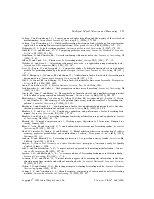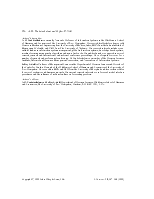













Journal of Forecasting
J. Forecast. 18, 167±180 (1999)
An Intelligent Model Selection and Forecasting System
A. R. VENKATACHALAM* AND JEFFREY E. SOHL
Whittemore School of Business and Economics, The University of New Hampshire, USA
ABSTRACT
In this paper we present an intelligent decision-support system based on neural network technology for model selection and forecasting. While most of the literature on the application of neural networks in forecasting addresses the use of neural network technology as an alternative forecasting tool, limited research has focused on its use for selection of forecasting methods based on time-series characteristics. In this research, a neural network-based decision support system is presented as a method for forecast model selection. The neural network approach provides a framework for directly incorporating time-series characteristics into the modelselection phase. Using a neural network, a forecasting group is initially selected for a given data set, based on a set of time-series characteristics. Then, using an additional neural network, a speci®c forecasting method is selected from a pool of three candidate methods. The results of training and testing of the networks are presented along with conclusions. Copyright #1999 John Wiley & Sons, Ltd.
KEYWORDS neural networks; time-series characteristics; model selection; forecasting; backpropagation
The empirical research on forecast model selection has indicated that no one model exists that results in the most accurate forecasts for all types of data. To address this issue the forecasting literature has focused on identifying the characteristics of the time series as a means of providing guidelines forchoosing an extrapolation model. In this paper we develop an intelligent system as a means for providing insights into model selection and forecasting, using the characteristics of the time series as a basis for model selection. This decision-support system, utilizing a neural network structure in the selection phase of the forecasting system, capitalizes on the results of the model selection research and provides a framework for selecting among several extrapolative methods.
In the well known M-competition (Makridakis et al., 1982) the need for choices among appropriate forecasting methods for the speci®c situation being considered was explicitly recognized. In an attempt to understand the forecast model selection process Mentzer and
![]()
* Correspondence to: A. R. Venkatachalam, Department of Decision Sciences, Whittemore School of Business and Economics, The University of New Hampshire, Durham, NH 03824-3593, USA. E-mail: venky@christa.unh.edu
CCC 0277±6693/99/030167±14$17.50 Received October 1996 Accepted June 1998
Cox (1984) examined sales forecasting practices along four dimensions: technique familiarity, satisfaction, usage and application. Surveys during the same time period (Fildes and Lusk, 1984; Sparkes and McHugh, 1984) extended the Mentzer and Cox (1984) work to include British forecasting practices. Later work by Dalrymple (1987) and Wilson and Daubeck (1989) examined how ®rms produced forecasts, the preferred forecasting procedures and the accuracy of the resultant forecasts. These two studies also indicated that practitioners had increased their use of computer-based forecasting procedures. Additional work by Sanders and Manrodt (1994) sought to determine whether previous forecasting practices are changing, given the penetration of computers and forecasting software into current business decision making, and to identify the forecasting problems and needs of practitioners. Sanders and Manrodt (1994) indicated that while familiarity with quantitative methods increased in comparison with previous studies, practitioners desired techniques that are easier to use and wanted better guidelines for using available techniques. Mentzer and Kahn (1995) con®rmed the increased familiarity of forecasters with quantitative forecasting techniques. As these studies indicate, practitioners are familiar with quantitative forecasting techniques, appear to be using them in robust numbers, but seek guidance as to what method to use and when. Speci®cally, there is a need for practitioners to be provided with useful information with which they can make informed decisions regarding the selection of a forecasting approach for their situation.
Recent research has begun to focus on the quanti®cation of the forecast model selection process as a means of providing guidance to practitioners. Collopy and Armstrong (1992a), through a survey of forecasting experts, identi®ed the features of time series to be considered in the selection of an accurate extrapolation method. Based on these initial results a rule-based approach, where the use of extrapolation methods depends on the features of a time series, was developed (Collopy and Armstrong, 1992b). The expert system design has also been used in the development of an automated forecasting system (Moss, Artis and Ormerod, 1994). In this context, interventions normally introduced by forecasters are instead made through a rule-based approach and implemented within the automated forecasting system. Yokum and Armstrong (1995) compared expert opinions of criteria used for the model selection process and indicated that while accuracy was an important criteria other criteria were often considered. Approaching the model selection issue from a dierent perspective, Sohl and Venkatachalam (1995) demonstrated the utility of neural network methodology in the model selection process. Using simulated data, Chu and Widjaja (1994) relied on the pattern-recognition capability of a neural network to select an appropriate forecasting method. Rust et al. (1995) examined the performance of empirical criteria for selecting among several extrapolative models. A common thread among this model selection literature is the use of quantitative measures of time series characteristics as a means for developing guidelines to assist the practitioner in the model selection phase of forecasting.
Уважаемый посетитель!
Чтобы распечатать файл, скачайте его (в формате Word).
Ссылка на скачивание - внизу страницы.